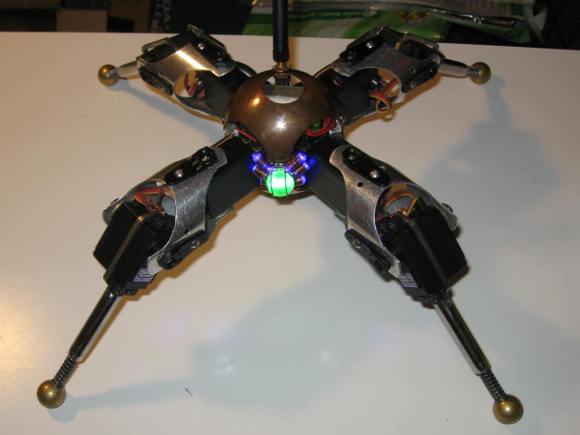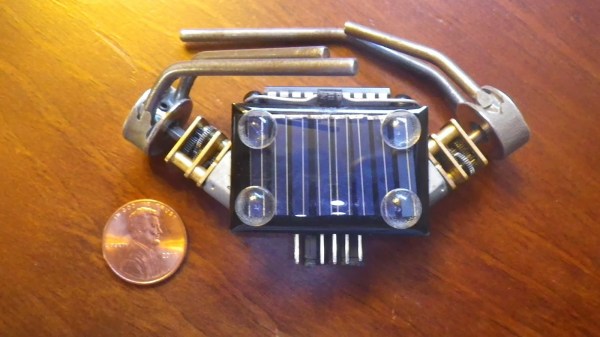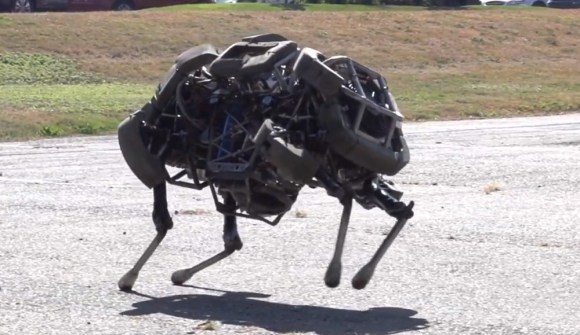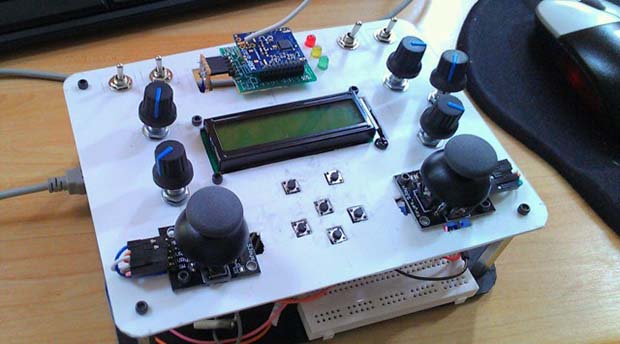
[Chris] has put together a robot head that is impressive at first sight. [Chris’] robot, Walter II, becomes even more impressive when you realize that [Chris] built every single part from scratch. Many of Walter’s parts were created using machines [Chris] built himself. Walter is a robot neck and head. His upper neck joint is based upon three bevel gears.Two steppers drive the side gears. When the steppers are driven in the same direction, Walter’s head nods. When they are driven in opposite directions, the head turns. The end result allows Walter’s head to be panned and tilted into almost any position.
A second pair of motors raise and lower Walter’s neck via a chain drive. What isn’t immediately visible is the fact that a system of gears and belts maintains the tilt on Walter’s head as his lower neck joint is actuated. For example, if Walter’s head is facing directly forward with his neck raised, one would expect him to be facing the ground when the neck is lowered. The gear/belt system ensures that Walter will still be facing forward when the neck joint reaches its lower limit. All this happens without any movement of the neck motors. [Chris] definitely put a lot of thought into the mechanical design of this system.
Continue reading “Walter Is A Robot Head Built From Scratch.”

 Back at New York MakerFaire 2012, we noticed an amazing little steampunk quadruped robot walking around in the crowd outdoors. The robot was amazingly well executed, and had a unique ability to draw children over with it’s puppy like animations. It turns out this is
Back at New York MakerFaire 2012, we noticed an amazing little steampunk quadruped robot walking around in the crowd outdoors. The robot was amazingly well executed, and had a unique ability to draw children over with it’s puppy like animations. It turns out this is 













